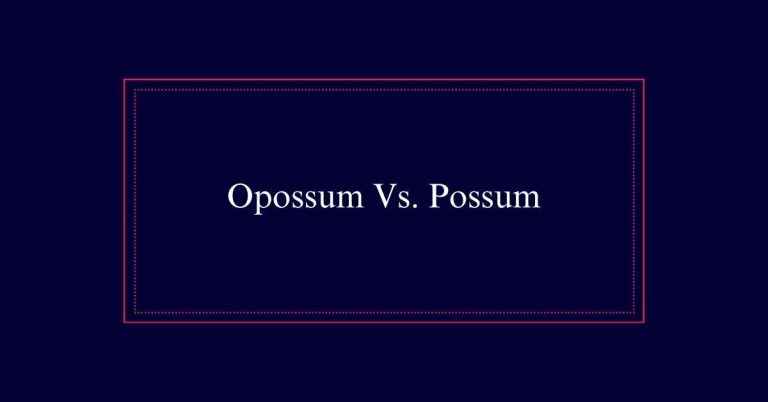How to connect sentences?
To connect sentences effectively, use linking words like ‘however,’ ‘therefore,’ and ‘also.’ These words guide readers through your text, ensuring a smooth and logical flow. Proper punctuation, such as semicolons and colons, helps in joining related ideas or lists. Emphasize points with words like ‘likewise’ and ‘in addition,’ while contrasting ideas with ‘conversely’ and ‘nevertheless.’ Avoid overuse of linking words to prevent repetition.
Transition Words
Connective words are essential tools that guide readers through the progression of ideas in a text. They help to create smooth connections between sentences, making the writing easier to follow.
Different linking words serve various purposes. For instance, words like ‘likewise,’ ‘in addition,’ and ‘also’ emphasize or add to an idea. Conversely, words such as ‘however,’ ‘nevertheless,‘ and ‘conversely’ introduce a different thought.
Using linking words effectively can prevent writing from becoming disjointed. They establish a logical flow and enhance readability. It is important to select the right linking word based on the relationship between the ideas you are connecting.
This thoughtful use of linking words facilitates clearer communication and strengthens the overall structure of the text.
Avoid Choppy Writing
Choppy writing disrupts the flow of your text and makes it difficult for readers to follow your ideas. To avoid this, use connecting words and proper punctuation. Connecting words like ‘however’ and ‘therefore’ help link ideas smoothly. Semicolons and colons can also connect sentences effectively. Here’s a quick reference table to help you:
| Technique | Example | Purpose |
|---|---|---|
| Connecting Words | ‘However, the results were different.’ | Links contrasting ideas |
| Semicolons | ‘She loves tea; he prefers coffee.’ | Connects related independent ideas |
| Colons | ‘He brought three things: pens, paper, ink.’ | Introduces a list or explanation |
Emphasize Ideas
To emphasize key ideas, use connecting words such as ‘likewise,’ ‘in addition,’ and ‘also.’ These words help highlight important points and add depth to your writing. They guarantee smooth flow between ideas and maintain reader engagement.
- Likewise: Shows similarity between two ideas.
- In addition: Adds more information to the existing idea.
- Also: Introduces another related point.
- Further: Provides additional support to the argument.
- Moreover: Strengthens the previous statement with more evidence.
Using these words effectively can make your writing more persuasive and coherent.
Emphasizing key ideas helps your audience grasp the main points quickly.
Practice incorporating these connectors to improve the clarity and impact of your writing.
Contrast Ideas
However, to highlight differences between ideas, linking words such as ‘conversely,’ ‘nevertheless,’ and ‘however’ are crucial. These words help signal to the reader that a contrast is being made.
For example, ‘The weather was sunny; nevertheless, we decided to stay indoors.’ Here, ‘nevertheless’ contrasts the sunny weather with the decision to stay inside.

Similarly, ‘Conversely, the new policy improved efficiency,’ uses ‘conversely’ to show a different outcome compared to a previous point. Using these words makes your writing more coherent and helps the reader follow your argument.
Using Colons
Colons are versatile punctuation marks that introduce lists, explanations, or examples related to the preceding idea. They help writers provide additional context or detail without starting a new sentence. A colon signals that what follows is directly related to the preceding statement.
Here are some uses of colons:
- Lists: ‘She needs to buy groceries: milk, bread, and eggs.
- Explanations: ‘He was late for a simple reason: the train was delayed.’
- Quotations: ‘The teacher said it best: ‘Practice makes perfect.”
- Emphasis: ‘There was only one option: succeed.’
- Titles and Subtitles: ‘Read the article ‘Climate Change: A Global Challenge.”
Using Semicolons
Semicolons serve as a bridge between closely related independent clauses, enhancing the flow of ideas within a sentence. They allow writers to link thoughts that are too closely related to be separated by a period. For example, ‘She loves to read; her favorite genre is mystery.’ The semicolon shows that the two clauses are connected.
Semicolons can also be used in complex lists where items contain internal punctuation. For instance, ‘The conference had attendees from Paris, France; Berlin, Germany; and Tokyo, Japan.’ This usage clarifies the separation of items.
Enhance Readability
Connecting thoughts with semicolons can greatly improve the flow of writing; however, to truly enhance readability, one must consider additional techniques. Clear and concise writing makes it easier for readers to follow the text. Various strategies can be employed to achieve this goal:
- Use guide words: Words like ‘therefore’ and ‘moreover’ can guide readers through your arguments.
- Vary sentence length: Mix short and long sentences to maintain reader interest.
- Employ active voice: Active voice makes sentences more direct and engaging.
- Break up complex ideas: Divide long, intricate thoughts into manageable chunks.
- Use headings and subheadings: These elements help organize content and enhance readability.
Flow and Clarity
Achieving flow and clarity in writing guarantees that readers easily understand and follow the author’s ideas.
Flow refers to the smooth progression of ideas from one sentence to the next. Clarity guarantees that each sentence is comprehensible and devoid of ambiguity.
To achieve this, writers should use linking words and punctuation marks effectively. This practice helps connect ideas logically and seamlessly.
Avoid overcomplicating sentences; simplicity often leads to better understanding. Additionally, maintaining consistent tense and perspective aids in readability.
Effective Usage Tips
Building on the importance of flow and clarity in writing, here are some practical tips for using linking words and punctuation effectively:
- Use linking words sparingly: Overuse can disrupt the flow.
- Match linking words to their purpose: Make sure the word fits the relationship between sentences.
- Employ colons wisely: Use them to introduce lists or explanations.
- Use semicolons to connect related ideas: They link independent clauses smoothly.
- Vary your sentence structures: This avoids monotonous writing and maintains reader interest.
Common Mistakes
One common mistake is the overuse of linking words, which can disrupt the natural flow of writing. While these words are useful, excessive use can make the text feel forced and unnatural. Another frequent error is the incorrect use of punctuation marks like colons and semicolons. Misusing these can confuse readers and obscure the intended meaning. Additionally, failing to establish clear connections between sentences can hinder the overall coherence of the writing. To avoid these pitfalls, careful revision and editing are essential.
| Common Mistake | Example | Correction |
|---|---|---|
| Overuse of linking words | Additionally, also, in addition | Use sparingly to avoid redundancy |
| Misuse of colons | Incorrect: He bought: apples, oranges, and bananas. | Correct: He bought three fruits: apples, oranges, and bananas. |
| Misuse of semicolons | Incorrect: She likes math; and he likes science. | Correct: She likes math; he likes science. |
| Lack of clear connections | Sentences feel disconnected. | Ensure logical flow and coherence. |
| Awkward transitions | Ideas jump abruptly. | Use smooth, logical transitions. |
Frequently Asked Questions
How Can I Determine the Appropriate Transition Word for a Specific Context?
To determine the appropriate connecting word, first identify the relationship between the sentences. Consider if you are adding information, contrasting ideas, or indicating sequence. Choose a connecting word that accurately reflects this relationship.
What Are Some Examples of Transition Words for Concluding Ideas?
For concluding ideas, use words like ‘in conclusion,’ ‘to summarize,’ ‘finally,’ ‘in summary,’ and ‘to sum up.’ These words signal the end of a discussion and help to reinforce the final points.
How Do I Know When to Use a Colon Versus a Semicolon?
Use a colon to introduce a list, example, or explanation. Use a semicolon to connect related independent clauses. Proper punctuation enhances clarity and flow, ensuring your writing is both coherent and professional.
Can Transition Words Be Used Within Paragraphs or Only Between Sentences?
Linking words can be used both within paragraphs and between sentences. They aid in creating smooth connections between ideas, enhancing readability and coherence. Use them thoughtfully to maintain a natural flow in your writing.
What Are the Best Practices for Proofreading Sentence Connections in My Writing?
To proofread sentence connections, check for smooth flow and proper punctuation. Verify that transition words are used naturally and sparingly. Confirm that colons and semicolons are correctly placed to enhance readability and coherence.






